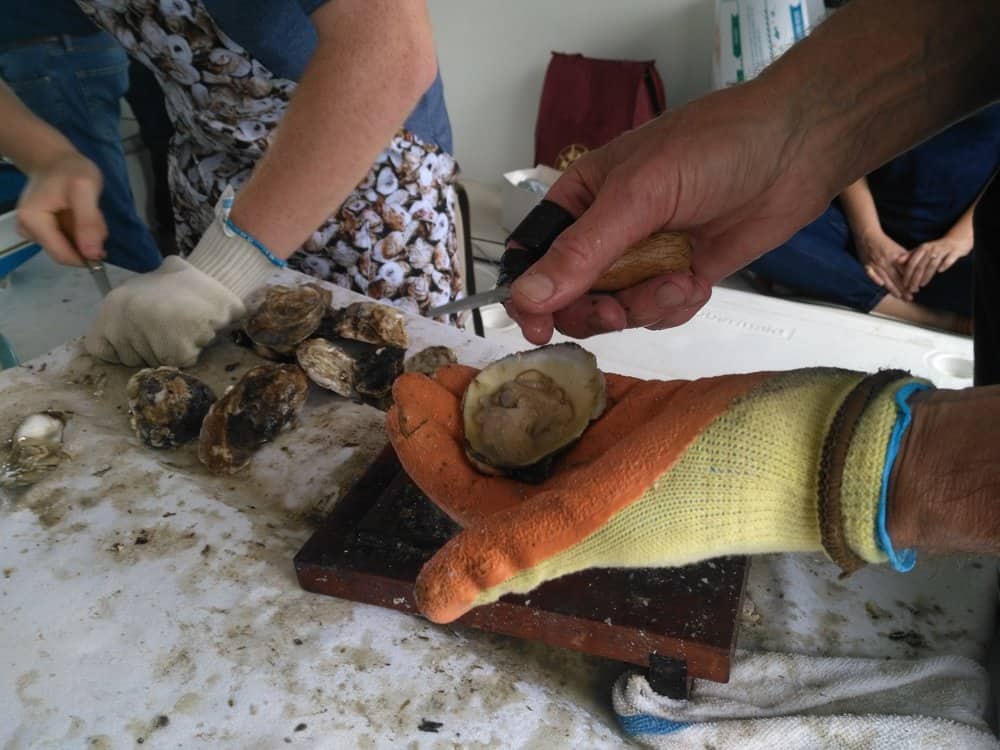The health of Baltimore City’s Inner Harbor has a bad rap that persists even as the water quality improves year by year. But the people behind the Healthy Harbor Initiative are undaunted. Instead, they are doubling down on this year’s swimming and paddling opportunities.
The much-talked-about Harbor Splash will return for 2025, adding a harbor crossing swim. Ultramarathon swimmer Katie Pumphrey, who swam 24 miles from the Bay Bridge to the Inner Harbor promenade this summer, will attempt a repeat to bring more awareness to the harbor cleanup efforts. And the city is adding two public kayak launches in touristy waterfront neighborhoods, expanding access to its new Baltimore Blueway urban paddle trail.
All of these new events were announced at this week’s presentation of the Waterfront Partnership’s Healthy Harbor Report Card. The report conducted by the University of Maryland Center for Environmental Science (UMCES) proclaims that the waterway’s ecosystem earned a moderate “C” grade in 2024. The overall C grade takes into account ecological health factors including: dissolved oxygen (B), nitrogen (C), phosphorous (C), water clarity (C), and chlorophyll a (D).
The Waterfront Partnership claims the reduction in dissolved oxygen (also seen throughout much of the Chesapeake Bay this year) as a victory. However, the D grade in chlorophyll a indicates that algal blooms in the harbor are still a real issue. The report says, “Baltimore can, and does, support a diverse community of wildlife, but the Harbor lacks resilience, meaning the ecosystem is vulnerable to intermittent changes in water quality caused by algal blooms, turnover events, and pollution.”
One such algal bloom made headlines this September, when a combination of weather conditions caused a dead zone that killed tens of thousands of fish. The perfect storm of conditions created the bacteria, but the harbor could be more resilient to naturally-occurring blows.

As for the safety of tipping a toe into the water, Healthy Harbor report includes an entirely separate set of grades. As Waterfront Partnership Director Adam Lindquist explains, the risk of swimming in the harbor and how healthy it is for aquatic life are two very different issues. “Most animals are perfectly happy living alongside bacteria that could make people sick, and aquatic life can be affected by things like water clarity that are not a problem for people.” The grades for swimming safety range from A+ (near Fort McHenry, in the mainstem of the Patapsco River, and at Masonville Cove) to F (Ferry Bar Park in South Baltimore and the Patapsco River mouth near Cherry Hill).
Overall, the five Inner Harbor monitoring sites met Maryland’s swimming standards on days when it hadn’t rained in the past 48 hours. Waterfront Partnership, with the help of Blue Water Baltimore, was diligent in its water testing. Samples were taken Monday through Friday, for the entire recreation season.
When the city put on its Harbor Splash event, where 150 people jumped into the harbor, it had been a particularly dry stretch of days. The event sold out in a matter of minutes. See the Harbor Splash in action here.
The Harbor Splash will return for 2025, this time with a half-mile-long crossing of the harbor. A second swimming event will also return. Katie Pumphrey, who made history by swimming from Sandy Point State Park to the Inner Harbor Promenade, is going to attempt the 24-mile distance again in late April or early May. This time, she’ll bring along a handful of other ultra-distance swimmers. “This swim put Baltimore on the map for my sport,” she says. She hopes to expand the swim into an annual challenge, with shorter-distance options.
Pumphrey points out that more than 600 people each year participate in the 4.4-mile Great Chesapeake Bay Swim, which crosses the Bay running parallel to the Chesapeake Bay Bridge, without questioning the water quality. But most would never dream of swimming up the Patapsco to Baltimore. She wants to continue proving the water is safe enough.
The director of Baltimore’s Department of Public Works says great strides have been made in sewage overflows. Director Khalil Zaed cites a 75 percent reduction in overflow volume, which he attributes to major changes at the Back River and Patapsco wastewater treatment plants.
A $430 million overhaul at Back River known as the Headworks Project has stopped a large number of Sanitary Sewage Overflows that have been happening since the early 1900s. The city’s sewage system was designed with intentional release valves that allowed sewage to overflow into streams (with the intent to avoid overflows in people’s basements or streets). The work at Back River is expected to be finished by the end of the year and the Department of Public Works has secured $1.5 million in funding for operational costs going forward.
As Baltimore leaders anticipate continued improvements to water quality, they are pushing ahead with the Baltimore Blueway paddling trail. A symbolic ribbon was cut on a new public kayak launch in Fells Point, where paddlers can put their small craft in and travel the Baltimore Blueway paddle trail. They can also launch from other public access points and dock their kayaks in Fells Point as a destination, sightseeing or getting a coffee along their trip.

The map below includes a vision of the Baltimore Blueway that includes the new Fells Point public launch and a second launch, set to open in spring 2025 near the Rusty Scupper at the southwest end of the Inner Harbor promenade:

At the newly planned Inner Harbor launch, Lindquist says there are plans for a pilot program offering kayak rentals to the public. We’ll continue to report on developments in these water access opportunities.




